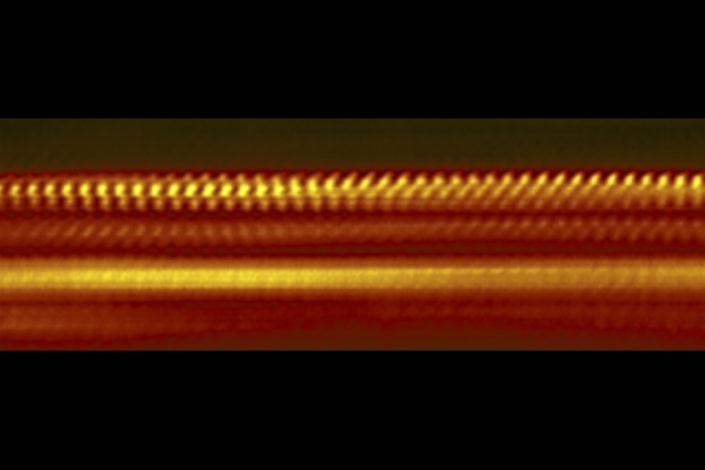By Gina Roos, editor-in-chief
Researchers at Stanford University have developed atomically-thin materials that can create ultra-thin heat shields for electronic devices like cellphones and laptops. This can make next-generation products much smaller, while protecting people and devices from heat generated by electronic components.
Traditionally, electronic product designers use glass, plastic, or layers of air as insulation to protect people and devices from hot components like microprocessors. Stanford researchers have demonstrated that four layers of atomically-thin materials, stacked like sheets of paper, can provide the same insulation as a sheet of glass 100× thicker. The four layers form a heat shield that is two to three nanometers thick, or about 50,000× thinner than a sheet of paper.

Four layers of atomically-thin materials, stacked like sheets of paper, can provide the same insulation as a sheet of glass 100× thicker. (Image: National Institute of Standards and Technology)
“In the near term, thinner heat shields will enable engineers to make electronic devices even more compact than those we have today,” said Eric Pop, professor of electrical engineering, Stanford University, and senior author of a paper published Aug. 16 in Science Advances, in a press release. “We’re looking at the heat in electronic devices in an entirely new way.”
Stanford researchers looked at the heat issue as a form of high-frequency sound, taking design principles from music recording studios that use thick glass windows to block the exterior sound, and home builders that install multi-paned windows to keep homes warmer and quieter.
Instead of using “a thick mass of glass,” researchers created an insulator that used several layers of atomically-thin materials, said postdoctoral scholar Sam Vaziri, the lead author on the paper.
The Stanford researchers used a layer of graphene — the first example of atomically-thin materials — and three other materials, each three atoms thick to create the four-layer insulator that measures 10 atoms deep. The insulator works “because the atomic heat vibrations are dampened and lose much of their energy as they pass through each layer,” according to the researchers.
The next step for researchers to make nanoscale heat shields practical, is to find or develop a mass production technique to deposit atom-thin layers of materials onto electronic components during manufacturing.
At the same time, it has opened up a new field of phononics called vibrational energy, as the researchers better understand heat in solid objects as a form of sound. “As engineers, we know quite a lot about how to control electricity, and we’re getting better with light, but we’re just starting to understand how to manipulate the high-frequency sound that manifests itself as heat at the atomic scale,” Pop said.
Advertisement
Learn more about Electronic Products Magazine








